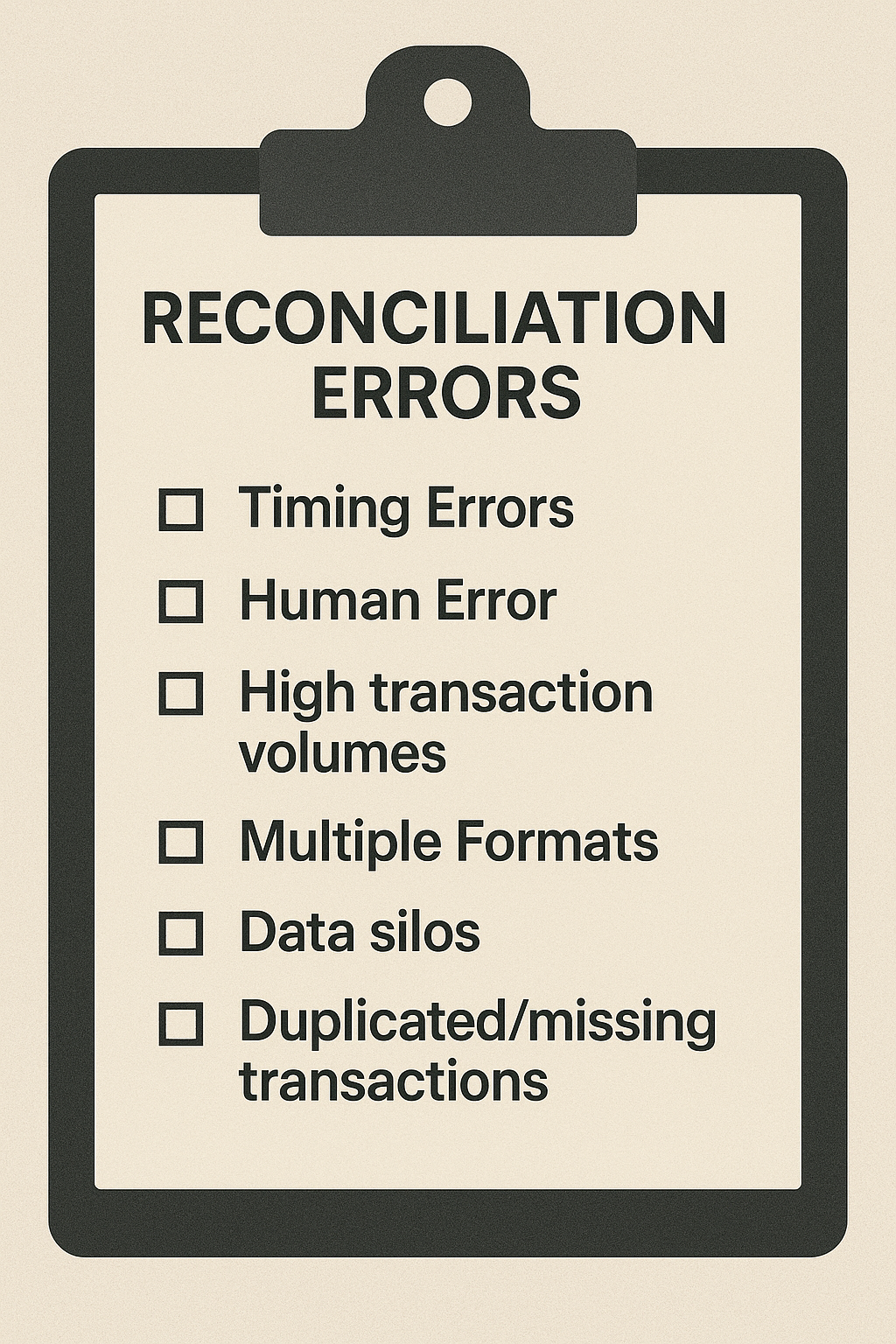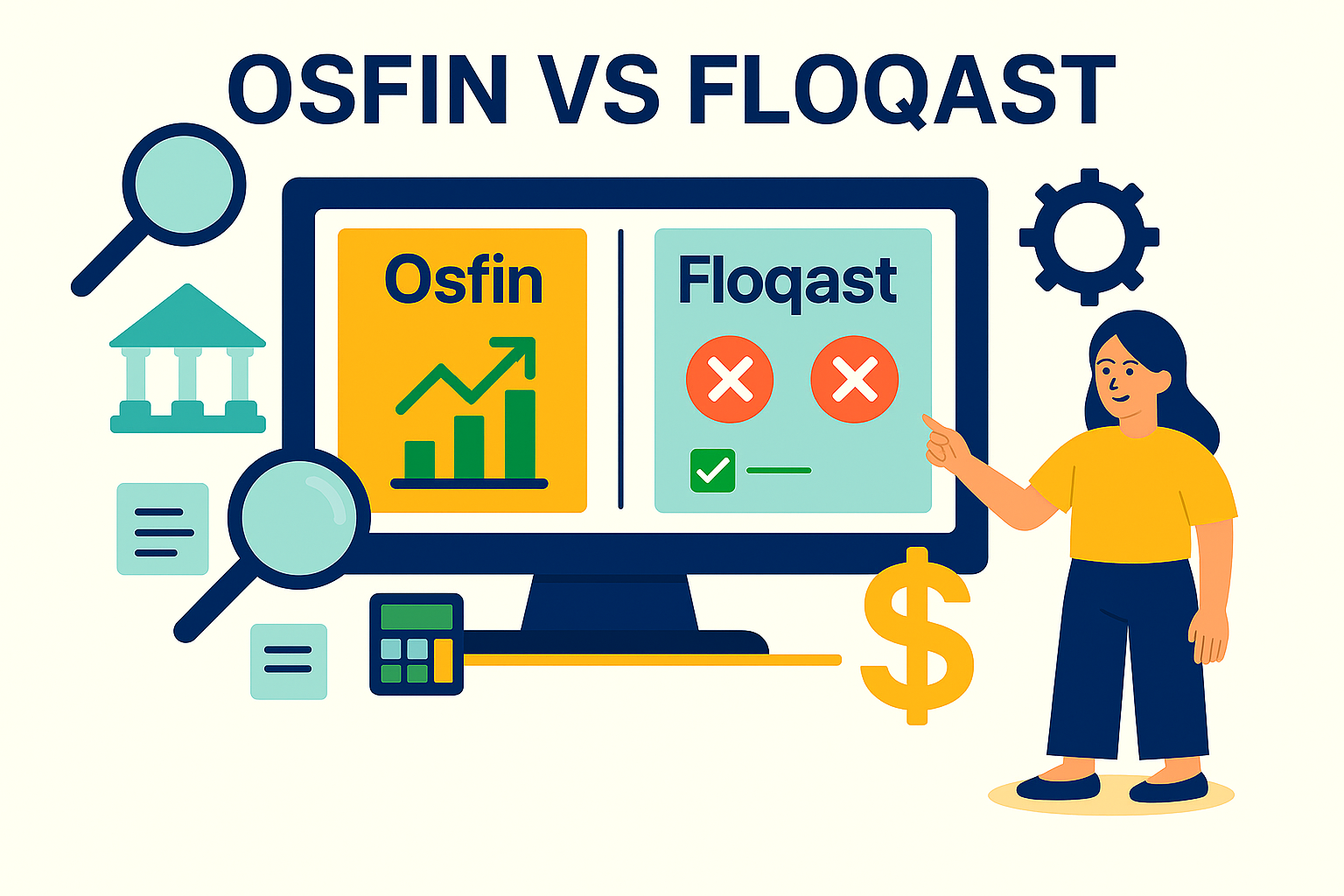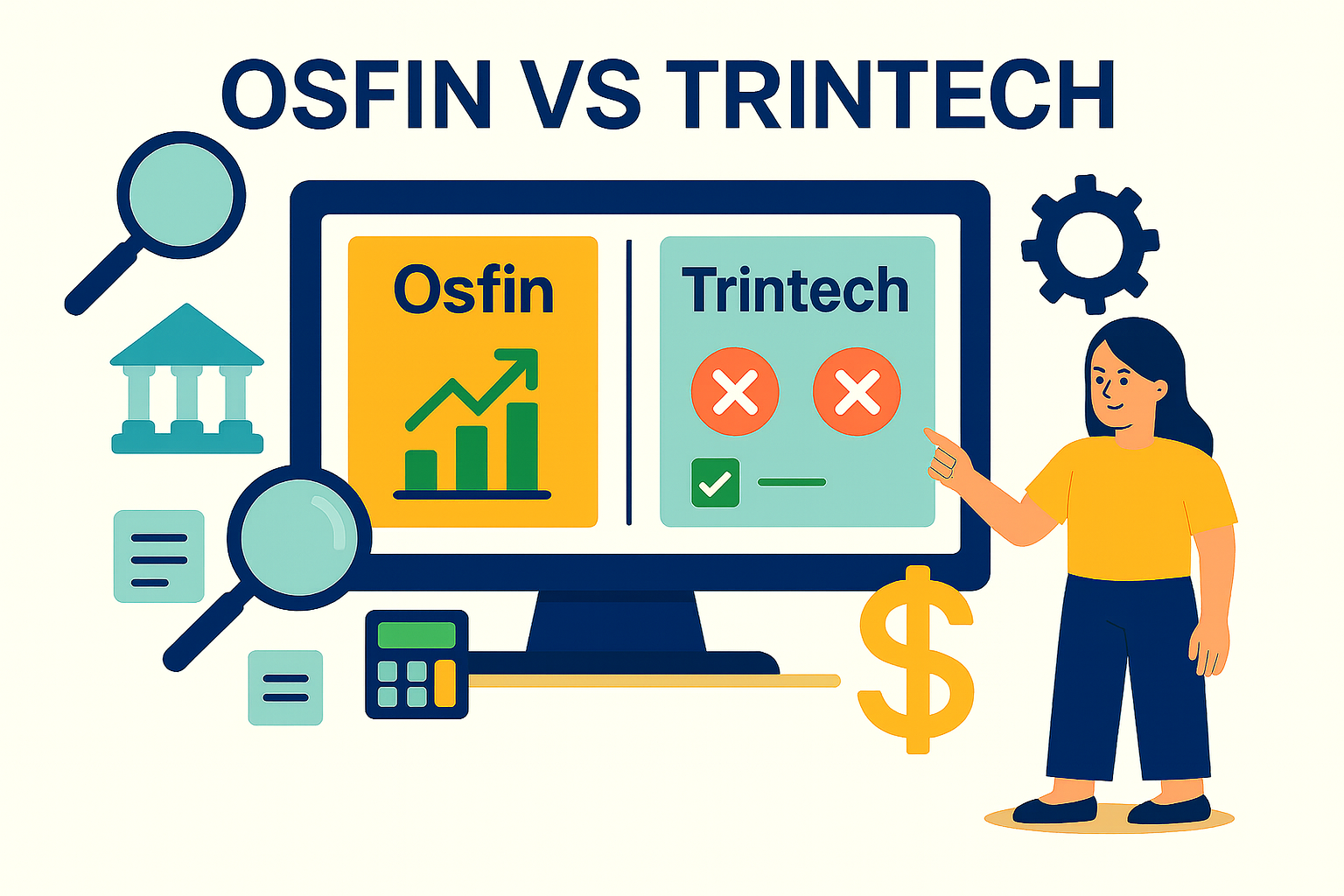Financial Reconciliation: Common Errors, Automation, and Controls
Financial reconciliation plays a crucial role in any business, particularly those involved in high-volume transactions, such as banks and other financial institutions. This ensures that financial statements are accurate, errors are detected early on and rectified, and compliance and regulatory demands are met. At the same time, financial reconciliation allows businesses to mitigate risks and take informed decisions to optimize operations.
However, this process can be complicated, especially when dealing with multiple formats, systems, and accounts, as well as the sheer volume of transactions being carried out (particularly when done manually). In this article, we define financial reconciliation, discuss common errors and controls, and explore how automation can be the solution for your reconciliation requirements.
What this blog covers:
- What financial reconciliation is and why it’s vital for financial integrity
- Core types: bank, AP/AR, ledger, transaction matching
- Common reconciliation challenges – errors, delays, and volume overload
- Best practices and controls for efficient, accurate reconciliation
- How automation tools like Osfin simplify and scale financial reconciliation
What is Financial Reconciliation?
The most basic financial reconciliation definition is the process of comparing two or more different sets of financial records to check for consistency and accuracy. However, when it comes to banks or other financial institutions, this definition becomes more comprehensive.
Financial account reconciliation definitions for these institutions must also encompass the volume of transitions taking place, processing millions of records at a time. This could be across multiple ledgers, accounts, between banks, payment gateway reports, and more. The goal is to identify any discrepancies or fraudulent activities and resolve them before they lead to larger losses.
Importance of Financial Data Reconciliation in Business Operations
There are countless reasons why businesses should invest in strict financial reconciliation protocols. These include:
- Identifying fraud: Financial reconciliation helps you detect signs of fraud early on. For example, were any checks issued without the proper authorization? Were any transactions duplicated?
- Catching data mismatches: The Financial reconciliation process helps uncover any data entry errors, like duplicated entries, incorrect amounts, and more.
- Meeting compliance requirements: Proper financial reconciliation ensures that you remain audit-ready while complying with regulatory requirements for reconciliation timelines.
- Preventing revenue leakage: Reconciliation confirms that expected money movement, across systems, partners, or customers, actually happened. It closes the loop on all receivables and disbursements and prevents revenue leakage.
Without proper reconciliation tools and processes, data discrepancies and security breaches may occur, leading to significant financial losses, customer dissatisfaction, reputational problems, and other severe consequences.
How & When Is Financial Reconciliation Performed?
The frequency at which financial reconciliation is performed depends on the geography and industry of the institution and the payment channels it supports. It could be conducted hourly, daily, weekly, or monthly. Here is a step-by-step breakdown of how financial reconciliation is generally performed:
1. Collecting Necessary Data
Reconciliation begins with collecting data from all systems involved including general ledgers, partner accounts, payment gateways, clearinghouses, and ERP systems. This data is then processed and cleaned and prepared for reconciliation.
File-format agnostic platforms like Osfin can ingest data from various systems regardless of whether their formats are JSON, XML, CSV, etc using its 170+ integrations. This data is then automatically parsed and custom deviation tolerance rules are applied to clear it of any inconsistencies.
2. Matching Items
These accounts then need to be matched between external statements, core banking systems, payment gateways, and other third-party platforms. Transaction matches can be one-to-one or one-to-many.
3. Tagging, investigating, and escalate discrepancies
Any discrepancies must be accurately tagged, and it is essential to match them to their reason. These must then be escalated and routed to the concerned department for quick resolution.
4. Documenting reconciliation and creating an audit trail
The reconciliation process must be accurately logged in detail, creating a clear audit trail. Failing to document financial reconciliation (meaning any adjustments, exceptions, errors, escalations, etc.) could raise questions with compliance or during audits. Logging and storing your reconciliation can prevent any legal or audit-related issues.
5. Creating a routine
Regular reconciliation is crucial for ensuring smooth operations. While this can be done weekly, monthly, or quarterly, for institutions like banks, daily reconciliation is recommended due to the high volume of transactions taking place.
Common Financial Reconciliation Errors

Financial reconciliation’s not always a straightforward process. Here are some common errors in financial reconciliation:
1. Timing Discrepancies
This is one of the most common errors in the reconciliation process. Sometimes, transactions may be recorded at different times depending on the system. This could be due to clearing house cycles, different cut-off times for various banks, or processing lags. For example, your bank’s core banking system may process incoming wires until 5 pm, whereas a corresponding bank’s may only process until 4 pm. This could create a temporary mismatch in records.
2. Human Error
Human error is inevitable. Manually inputting data will almost certainly result in mismatches, discrepancies, and mistakes. For example, a clerk processing payments may input the value of the transaction as $175 instead of $157, enter incorrect account details, or miscategorize entries. These would lead to data mismatches, necessitating larger investigations down the line.
3. High Transaction Volumes
Banks handle millions of transactions in a day. In this situation, manual reconciliation is nearly impossible and highly susceptible to error. Even minor discrepancies could lead to exceptions and losses.
4. Multiple Formats and Data Silos
This is another significant issue for financial institutions. Data may be stored in multiple locations. For example, the core banking system (CBS), local card or ACH networks, SWIFT, and others. Matching data across these formats is complex and can lead to errors and delays.
5. Duplicated or Missing Transactions
Transactions may be added twice due to system glitches, or, conversely, they may be missed altogether.
6. Process-Specific Errors
Each payment type, whether it's UPI, IMPS, card settlements, NACH mandates, or SWIFT wires, follows a distinct processing lifecycle. They differ in settlement timelines, file formats, cutoff times, and error codes. Keeping track of these different processes can be difficult and if reconciliation is done uniformly across all of these payment processes, it can result in errors.
{{banner1}}
Automating Financial Reconciliation with Osfin
Automating reconciliation (the financial meaning) refers to using software platforms to match financial records, identify discrepancies, update ledgers, investigate errors, and create audit trails without manual input.
Osfin.ai is the tool you need to automate your financial reconciliation process. Our platform ingests data from multiple sources with 170+ integrations. It is file-format agnostic and handles JSON, XML, CSV XLS and various other formats with ease. Osfin automatically parses, processes, standardizes and filters our poor quality data before starting the reconciliation process to ensure more accurate results.
Osfin’s reconciliation engine can handle millions of entries in just a few minutes and deliver 100% accurate results with the help of logic-based matching. In case any discrepancies or mismatches are noticed, they are flagged instantly and tagged with an appropriate reason. The ticketing and exception handling module can then create a ticket and route the issue to the appropriate internal or external stakeholder for resolution.
Osfin also offers real-time visibility into the reconciliation processes through the live dashboard and generates reconciliation reports to ensure that your institution is always audit-ready. This helps you meet compliance requirements for various standards and regulations.
Lastly, Osfin keeps all your data and sensitive information completely secure through our enterprise grade security systems fortified with 256-bit SSL encryption, supports role-based access, and compliance with global standards including SOC 2, PCI DSS, ISO 27001, and GDPR.
{{banner2}}
Types of Financial Reconciliation
Broadly, the types of reconciliation include:
1. Payments Reconciliation
This type of reconciliation involves matching payment records across channels like UPI, SWIFT, IMPS, and ACH against internal ledgers. It ensures that every debit or credit has settled as expected, including partial or delayed transactions.
2. Account Reconciliation
This reconciliation matches balances and transactions across internal records such as customer accounts, branch records, or partner ledgers against the general ledger or CBS. This helps maintain book-level consistency and prevents reporting gaps.
3. Balance Reconciliation
Used in treasury and EOD processes to confirm that balances across banks, ERPs, and sweep accounts match expected positions.
4. Transaction Reconciliation
This focuses on matching individual transactions across systems. It supports one-to-one, one-to-many, and partial match logic, often needed in co-lending, EMI collection, and PSP integrations.
5. Gateway & Fee Reconciliation
It ensures that payouts from payment gateways align with internal values and fee deductions, including taxes, MDRs, and commissions.
Key Controls for Accurate Financial Reconciliation
Controls are the backbone of proper reconciliation. But what is a financial reconciliation control? These generally refer to key procedures and processes that help ensure the consistency and accuracy of financial records.
Typically, key controls for financial reconciliation involve matching internal records with external ledgers, payment gateway records, card provider files, CBS and more to identify and flag discrepancies. Financial reconciliation controls ensure your financial institution’s data is secure, accurate, safe from fraud, and complies with regulatory requirements. Controls could also include role-based access to data, spreadsheets, and supervisory controls, as well as controls over data entry input and other relevant areas.
Best Practices for Effective Financial Reconciliation
For accurate financial data reconciliation, the best practices are:
- Regular Reconciliation: Conducting daily reconciliation can help prevent significant discrepancies. Schedule regular checks along the way and establish clearly defined guidelines for the process.
- Role-Based Segregation: Different personnel are responsible for the various steps involved in recording and reconciling data. This helps to prevent fraud and tighten security.
- Regular Training and Review: Personnel must also receive regular training and updates on changes to the reconciliation process. It is also essential to review and refine the reconciliation process to ensure optimal accuracy and efficiency, as well as provide training and support to personnel involved in the reconciliation process.
- Reconciliation Software: The proper use of reconciliation software is crucial for maintaining data accuracy, ensuring security, and facilitating smooth operations.
Financial Reconciliation Is More Than a Compliance Task
Looking for a financial reconciliation platform that can meet your requirements? Osfin.ai is the perfect file format-agnostic platform for financial institutions. Osfin offers over 170 integrations that import data regardless of format, filter poor-quality data before reconciliation by applying custom deviations, and seamlessly detect outliers and duplicates at the point of ingestion.
Osfin’s no-code platform also has the capability to automatically fetch files in real-time, standardise the file formats and to provide logic-based matching. The platform can handle one-to-many and many-to-one transactions. Accurately reconciling over 30 million records in 15 minutes, Osfin also auto-re reconciles payment gateway reports with detailed validation of fee breakdowns, taxes, and commissions. Our exception handling is unmatched, automatically flagging unmatched transactions and assigning them to the correct reason, escalating them to the relevant departments, and providing live dashboards to display match statuses, exception queues, and exposure.
It delivers a comprehensive compliance report while maintaining audit-ready workflows. At the same time, Osfin offers complete traceability and transaction history. Your data is also secured with 256-bit encryption, two-factor authentication, and role-based access. It also complies with SOC 2, ISO 27001, PCI DSS, and GDPR requirements.
{banner3}}
FAQs on Financial Reconciliation
What is the financial reconciliation process?
Financial reconciliation refers to comparing different data sets and verifying that the information is accurate and consistent in both.
What are the controls for reconciliation?
Financial reconciliation controls are procedures that every business must implement for proper reconciliation. This includes matching ledgers, implementing role-based access controls, maintaining a reconciliation schedule, and other tasks.
How to ensure accuracy in reconciliation?
To ensure accuracy in financial reconciliation, it is essential to use a standardized process, automate your reconciliation process, and schedule regular reconciliations.
What is an example of a financial reconciliation?
An example of financial reconciliation is when a bank matches a transaction from Branch A to Branch B to ensure it is accurately reflected in the records of both branches.


